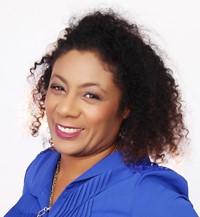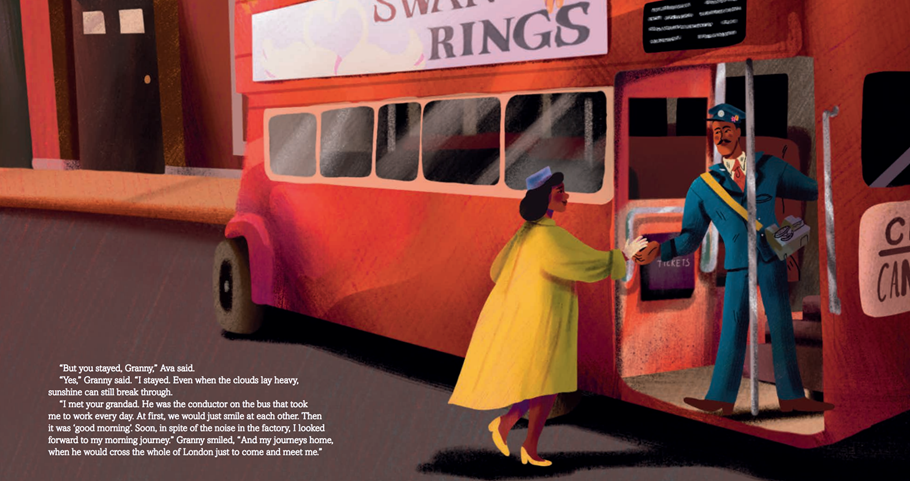Patrice Lawrence


About Author
Award-winning author Patrice Lawrence introduces her first picture book, Granny Came Here on the Empire Windrush.
Patrice Lawrence was born in Brighton and brought up in an Italian and Trinidadian household. Her first book for young adults, Orangeboy, won the Bookseller YA Prize and Indigo Donut, her second novel, won the Crimefest YA Prize. Both books were nominated for the Carnegie Medal. Patrice worked for more than 20 years for charities supporting equality and social justice. These themes (along with a serious amount of music) inform her stories. Patrice still lives in Brighton.
Interview
Granny Came Here on the Empire Windrush (Nosy Crow Books)
Q&A with Patrice Lawrence
22nd June 2023 is the 75th anniversary of the Empire Windrush arriving in Britain. We asked author Patrice Lawrence to introduce her picture book, Granny Came Here on the Empire Windrush, an inspiring story about a young woman making her way from Trinidad to the UK and the challenges she and others faced at that time. The book also introduces children to other significant Black women in history. It is illustrated by Camilla Sucre.
Teaching Resource: Windrush Discussions & Activities for KS1-KS2
5* Teacher Reviews: "Granny Came Here on the Windrush Empire is such a wonderful starting point for further discussion about the challenges and achievements of the Windrush generation."

Q&A with Patrice Lawrence
1. Can you tell us a little about your new picture book, Granny Came Here on the Empire Windrush?
Ava wants to dress up as someone inspirational for her school assembly. She and Granny rifle through the dressing up trunk, but no one that Granny suggests is quite right. Then Granny recounts the story of her journey from Trinidad on the Empire Windrush, the challenges she faced - and the love she found. After Ava hears Granny's story, she has new inspiration…
2. The relationship between the girl and her grandmother in the story is lovely - how did that develop and why did you focus the story on them?
My actual Trini grandma was terrifying! Though she had had 13 children, so I can understand why. By the time I first met her when I was six, she already had more than 20 grandchildren. Our different accents meant that we struggled to understand each other.
So Granny is part wish-fulfilment and part Aunty Baby. Aunty Baby is my mum's older sister in Trinidad and the Granny figure in my life. I wanted to celebrate love and kindness between women across different generations of family.
Finally, it is the image of the men disembarking from the Empire Windrush that is so iconic. It is easy to forget that women were aboard too!
3. Why did you want to create this picture book, and how important is it for you that stories like these are told?
I used to work in a charity promoting equality in early years settings. I know that there's some great work carried out in nurseries and children's centres to challenge stereotypes. However, for many reasons, the last couple of years have felt particularly difficult - xenophobia, racism, anti-Blackness. I think it's essential that we learn to understand and respect each other from the earliest age. Picture books are a perfect conversation starter!

4. Do you feel enough is being done yet to support and encourage representation in children's books and publishing?
Publishing is ultimately a business so it will publish the books that it thinks will sell. There are many wonderful people in publishing who are championing diverse representation, but at the most basic level, the salaries and lack of formal career path may make publishing an impossible choice for many young people from diverse backgrounds. This means that the majority of people involved in buying and producing books are not representative of the people buying them.
5. How much research did you do into the Empire Windrush before you wrote the book?
I knew quite a bit about it beforehand, but I do feel sad that the fact that there were 66 Polish refugees on the boat is less known. I hope there is a book inspired by their stories, too.
I was also genuinely surprised the first time I found out that the calypsonian, Lord Kitchener, was on the boat. I had known about him for a long time - introduced to his music by my Aunty Baby! I still have his album 'Kitch Hot and Sweet' on vinyl. I had no idea that he'd spent time in England.
6. Did you base your immigrant's journey on a particular person or on stories you have heard or read about?
Part of the book was inspired by Hackney Museum - a fabulous community-focussed organisation. They run sessions with primary school children where they fill an old suitcase with objects, then take them out one by one, asking the children who they think owned the suitcase. They did a session inspired by me.
They were also involved in a Windrush tea party for Caribbean elders. The local radio station was interviewing elders and I begged to be allowed to sit in. I took some of the details from these interviews. I also remember my mum saying that she had never seen a tree lose its leaves before.

7. You also include other notable figures from Black History in the story - how did you choose them?
I wanted a selection! Winifred Atwell is mostly forgotten now, but she was a very successful musician in the 1940s and 50s. Some primary school children know about Mary Seacole - others don't. Rosa Parks often pops up in Black History Month. Although I prefer to celebrate UK Black History, Rosa Parks offers a way in to talk about racism.
8. What did you think of the illustrations by Camilla Sucre? Do you have any favourite spreads?
They are absolutely gorgeous. The one of Granny and (future) Granddad on the bus always makes me smile. The love between granny and Ava radiates off the page. I also now want a yellow coat like nothing else on earth.

9. What would you like children to take from Granny Came Here on the Empire Windrush?
The only Black children in books when I was growing up were nasty stereotypes. There was no one with my history and heritage in the school curriculum - unless you counted enslavement in history and segregation in To Kill A Mockingbird. I often felt unwanted in England - and that I had no history.
I hope this is a story that Black children can feel proud of. I also hope that it can spark intergenerational conversations in all families!
10. Are you planning to write any more picture books? What are you writing currently?
Our Story Starts in Africa, by me and Jeanetta Gonzalez, is published in October. It's a picture book celebrating the history of African countries - in less than 1000 words! Again, it's a way to challenge the lack of knowledge and enduring misinformation about the continent. (Trinidad may also feature…)
I am also writing a middle grade series called The Elemental Detectives - a fantasy adventure set in Georgian London.
11. What are your favourite things to do when you're not at your desk?
Eat chocolate, watch Masterchef and walk by the beach. (I need the third one to counteract the first two.)
 Granny Came Here on the Empire Windrush
Granny Came Here on the Empire Windrush
 Rat
Rat
 Indigo Donut
Indigo Donut
 Orangeboy
Orangeboy
